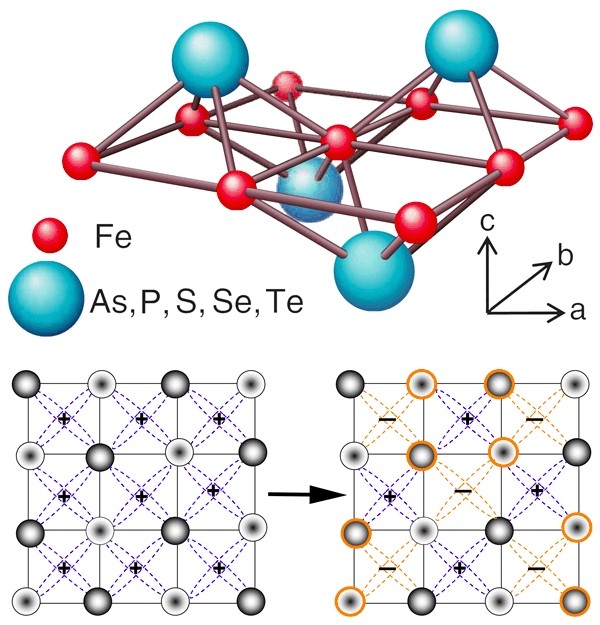Since 2008, the discoveries on iron-based high-temperature superconductors have not only provided a new class of high-temperature superconductors, but also raised some exciting and crucial scientific problems: Is there a microscopic theory that can explain their super Conductivity? If this theory exists, what will Lushan really look like? Is there some kind of deep internal connection between these new iron-based high-temperature superconductors and the old copper-based high-temperature superconductors? Institute of Physics, Chinese Academy of Sciences / Beijing Researcher Hu Jiangping of the National Laboratory for Condensed Matter Physics (from the perspective of symmetry) took an important step toward the final answers to these questions with a concise microscopic theory [Phys. Rev. X 2, 021009 (2012)] .
The currently widely used theory of iron-based superconductors uses all five d orbitals of iron atoms. Although these theories can give an energy band structure that complies with the first-principles calculation to a considerable extent, it is difficult to explain the symmetry observed by the pairwise interaction of electrons in many different iron-based superconductors due to the large number of parameters required The experimental fact that there are many similarities. Significantly different from these theories, researcher Hu Jiangping and his postdoc Hao Ningning proved that two orbits connected by S4 lattice symmetry of an iron-based superconductor can give the electronic structure responsible for superconductivity. And although this theory is very concise and requires very few parameters, it can still explain the huge differences in the band structure of different iron-based superconducting materials.
Further, this theory directly establishes the connection between iron-based and copper-based superconductors. Although the symmetry of the pairwise interaction of electrons in the new iron-based superconductor and the old copper-based superconductor looks different, within this theoretical framework, similar to the transformation that links two different reference systems, they are The "standard" transformation is connected. Therefore, this study provides a powerful tool for the unified understanding of iron-based and copper-based superconductors, which makes the study of the symmetry of the electron-pair interaction of iron-based superconductors become a thorough and comprehensive study in copper-based superconductors The problem. From this theory, it can be further proved that if it is s-wave pairing, there may be a difference in superconducting phase in the c-axis direction. Detecting this difference will be decisive for determining the superconducting mechanism. This S4 symmetry dual-orbit model will provide a new platform for the research of iron-based superconductors.
This research has also been selected as the focus of the American Physical Society report [Physics 5, 61 (2012)].

Figure: (above) The basic structure of the iron-arsenic or iron-selenium layer of an iron-based superconductor. (Bottom) Equivalence of s-wave pairing and d-wave pairing of iron-based superconductors.
NINGBO NEWMORE IMP. & EXP. Co., LTD. , https://www.newmoreclean.com